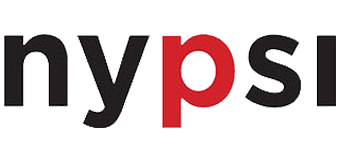414: Community Psychoanalysis and the Group
Instructor
Cassie Kaufmann, Ph.D.
Ben Kafka, Ph.D.
March 16 – April 13, 2026
Wednesdays, 8:35 – 10:00 pm
Co-requisites
Candidates must have or have had at least two cases in supervised psychoanalysis to be eligible for upper level courses.
Course Description
xx Third and Fourth Year students combined; alternates with 311.
Educational Objectives: Upon completion of this course, participants will be able to:
- xx
Evaluation Method
Each student’s participation in class discussion and his or her demonstration of understanding of the course objectives and reading material is assessed in a written evaluation by the instructor(s).
These articles are protected under relevant copyright regulations. They are available in the New York Psychoanalytic Society & Institute Electronic Reserve for your convenience, and for your personal use.
READINGS ARE CONFIRMED.
I.
CLASS 1: April 6, 2022
We will consider whether it is even possible to use multiple models, as addressed in the Blass article. Pine asks us to consider how this would work if it can be done.
Study Questions for Blass:
1. Do you agree with the idea that one must try to understand phenomena from within one overarching framework? Why or why not?
2. Blass suggests that holding multiple models is problematic because each model involves a whole layered understanding, not just an observation. Can you think of a way that this conclusion could still leave room for holding multiple models?
Study Questions for Pine:
1. Pine sees having an “uncommitted mind” as a goal of evenly hovering attention. He believes this goal can never be fully reached, as our theory dictates the potential meaning to us of what we hear. Explain the constraints that theory thus imposes. as well as possible benefits of being guided by such a framework.
REQUIRED READINGS
Blass, R. B. (2017). Committed to a Single Model and Open to Reality. Journal of the American Psychoanalytic Association, 65:845-858.
Pine, F. (1988). The Four Psychologies of Psychoanalysis and their Place in Clinical Work. J. Amer. Psychoanal. Assn., 36:571-596.
II.
CLASS 2: April 13, 2022
REQUIRED READINGS
Zimmer, R.B. (2017). The Analyst’s Use of Multiple Models in Clinical Work: Introduction. J. Amer. Psychoanal. Assn., 65(5):819-827.
LaFarge, L. (2017). From “Either/Or” to “And”: The Analyst’s Use of Multiple Models in Clinical Work. J. Amer. Psychoanal. Assn., 65(5):829-844.
III. Case Presentation by One of the Students
CLASS 3: April 20, 2022
REQUIRED READINGS
Busch, F. (2013). Transforming the Under-Represented: The Unacknowledged Influence of Ego Psychology. Canadian J. Psychoanal., 21(2):292-312.
IV.
CLASS 4: April 27, 2022
Class 4 study questions
– Busch states that a major change in the technique over the years has been working more closely with that is accessible to the patient in the clinical moment rather than what is farther in the unconscious. Think about a clinical moment in which you made an interpretation of what is unconscious with prior preparation, meaning, making it accessible to preconscious thinking.
– As an alternative, think about an example in which you made interpretations of what is unconscious without preparation for making it accessible to preconscious thinking.
– LeCour (2007) described the shift from a paradigm of lifting repression to a paradigm of transformation. Think of clinical examples: can the two paradigms be connected?
– Busch describes how all classic psychoanalytic schools share the concept of “binding the inchoate” (Green). How do you understand this concept ?
– Busch talks about the importance of the “here and now”. He states that the “workable here and now” is best understood not just in terms of what the patient knows but in what is knowable by the patient at a particular time. “We can not communicate meaning if the patient is afraid of meaning”. Have you had experiences/clinical moments with patients who are afraid of the meaning of the communication?
– A. Green talks about not interpreting resistances, in general. Can you think of an example and how this differ from an ego psychology approach of interpreting defenses and a Kleinian approach of interpreting the moment in the transference-countertransference?
REQUIRED READINGS
Busch, F. (2013) Changing views of what is curative in 3 psychoanalytic methods and the emerging, surprising common ground. Scandinavian Psychoanalytic Review 36:27-34.
